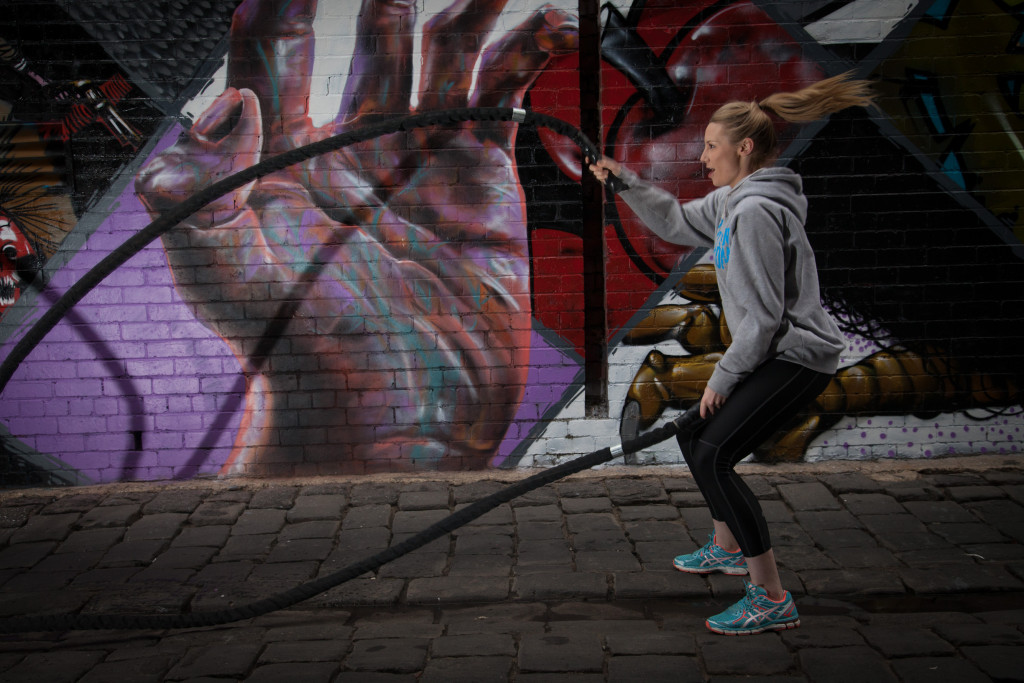Mobilise your warm up:
Athletes always do a proper warm up before they compete or play. Yet, so many people skip this critical part of the workout in order to save time. A proper warm up with mobilisation exercises has you increasing the blood flow to working muscles and readying your joints and body for the action ahead. This will decrease the risk of injury dramatically.
And when I say warm up, I don’t mean to do a quick bit of cardio, or to do a couple of stretches before you start. Athletes don’t do that, so why should you? You want to use as many different muscle groups when warming up to give you body the best chance to increase blood flow. These can include multi planar cardio activities such as high knees or ice skaters. 3D body weight movements such as air squats with rotations, will fire up your central nervous system. Joint mobilising with things like power bands is also great as it will promote fuller ranges of motion in the joints.
If you’re doing strength exercises with weight loaded exercises (eg. weighted squat) you should do a dynamic warm up of the unloaded movement first, for example a body weight squat. This prepares the exact muscles that are about to be used in the movement, and gets more blood flow to the areas required.
The main thing to remember is that different workouts require different warm ups. How you mobilise your body should relate to how you intend to use it.
Get your skills on:
The pros generally dedicate a lot of time to their development of fundamental skills(like a tennis serve, or kicking a soccer ball). This is usually done with the help of a coach to assist in identifying areas of weakness, and to teach new techniques and strategies to help improve them.
When it comes to workouts, it’s good to know that the fitness industry never stands still. There is always a new piece of equipment or exercise that has come out to help improve our results. However, a lot of people generally just copy what they have seen online and never get given the correct advice on form and muscle recruitment. By introducing a skills development component into your training, you can work on improving your movements and technique, learn new exercises and and spend time breaking down specific movements and identifying problem areas to unlock bigger gains. Many coaches refer to this as slowing down to speed up. So follow the rule of SAID. This means Specific Adaptations to Imposed Demands. Meaning your body will adapt to the stress placed on it by certain movements. So you’re better off making sure those movements are done correctly.
Gain more from the ground up:
When training to increase strength and power, athletes have their priorities right in order. In their strength and conditioning sessions the focus is on improving the performance of the major muscle groups, or the prime movers, by doing compound movements like squats, deadlifts, lunges and over head presses. More and more athletes are now incorporating Olympic lifts like hang cleans, clean and presses and the snatch to develop strength and power. The idea is simple. Spend more time on the primary movers like the chest, back and legs, and less time on isolating secondary movers like biceps, triceps and calves. As an athlete, they understand the importance of building a strong foundation for performance, and they do this through ground base training.
Ground base training is about focusing on movements that keep your feet on the ground to maximise strength, explosiveness and balance from the ground up. The average person could really benefit from adding more ground based training to their strength and conditioning, as the application of training to everyday movements has never been more relevant. Athletes don’t play sitting down, and in life, neither do we. So why try and build your strength with exercises where you’re sitting down??? Get on your feet and train big movements to get the biggest increases in your strength gains!


